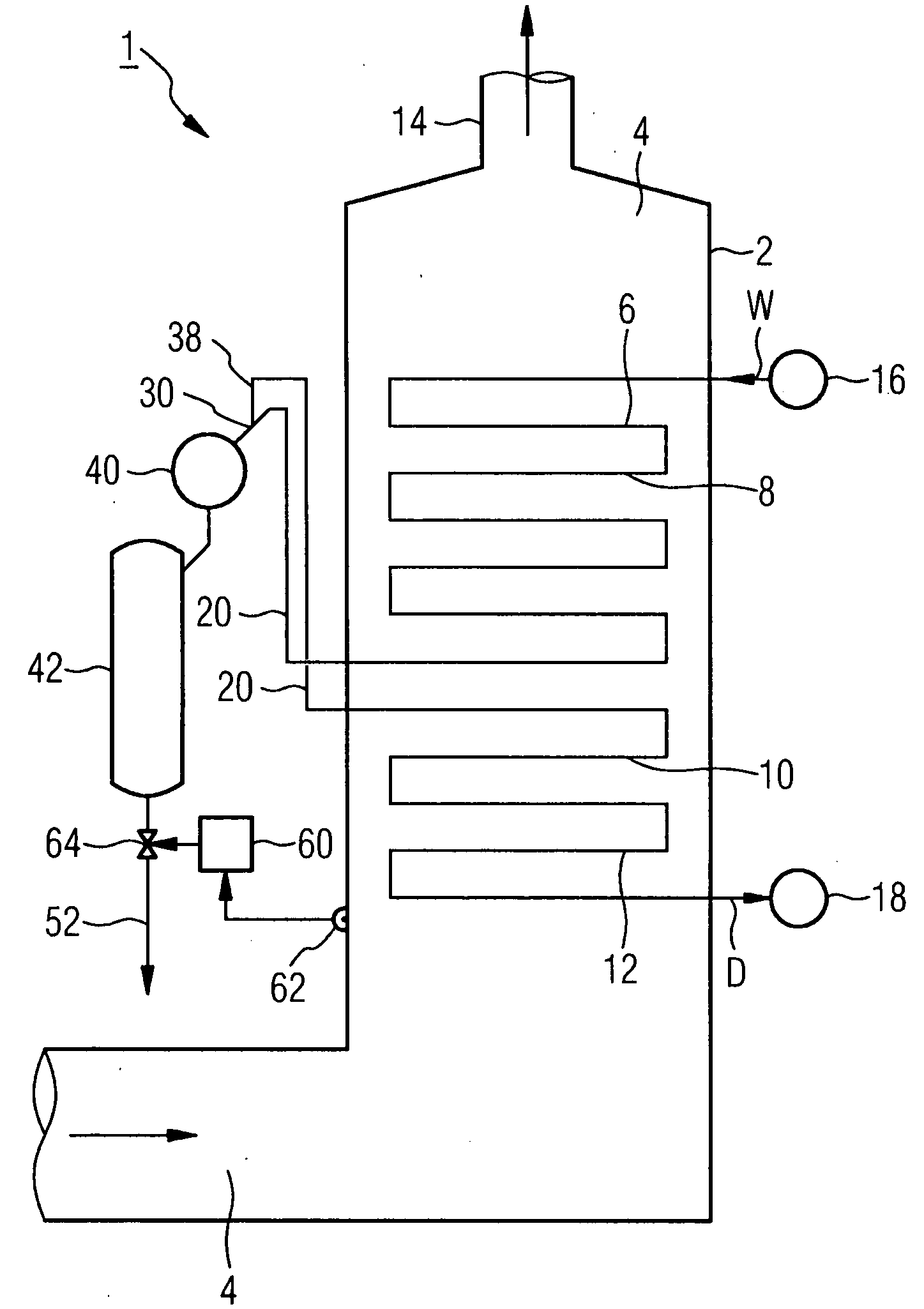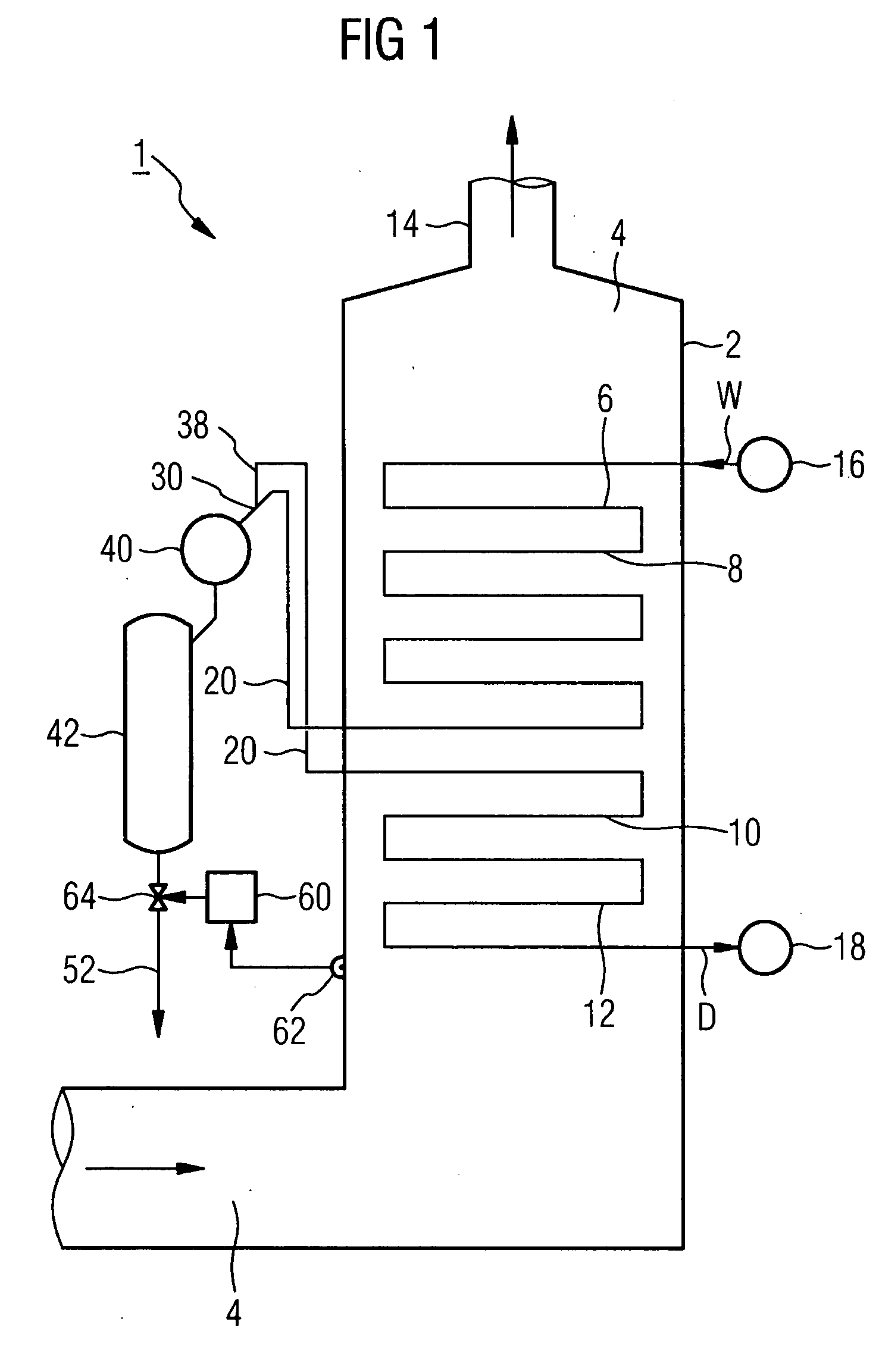Steam Generator
a generator and steam technology, applied in the direction of steam generation using hot heat carriers, steam separation arrangements, lighting and heating apparatuses, etc., can solve the problems of considerable restrictions in operating flexibility, inability to achieve phase separation, and inability to operate in low-load operation, etc., to achieve short reaction times, high degree of operating flexibility, and low cost
- Summary
- Abstract
- Description
- Claims
- Application Information
AI Technical Summary
Benefits of technology
Problems solved by technology
Method used
Image
Examples
Embodiment Construction
[0028]The steam generator 1 shown in FIG. 1 is designed as a once-through steam generator and, as part of a combined-cycle gas and steam turbine installation, is connected, in the form of a heat recovery steam generator, downstream of a gas turbine (not shown in more detail) on the exhaust gas side. The steam generator 1 has a boundary wall 2 which forms a heating gas passage 4 for the exhaust gas from the gas turbine. An evaporator once-through heating surface 8, formed from a number of evaporator tubes 6, and a superheater heating surface 12, which is connected downstream of the evaporator once-through heating surface 8 for the flow of a flow medium W, D and is formed from a number of superheater tubes 10, are arranged in the heating gas passage 4. In terms of the routing of the exhaust-gas stream from the gas turbine, the superheater heating surface 12 is arranged upstream of the evaporator once-through heating surface 8, with the result that the exhaust gas from the gas turbine ...
PUM
 Login to View More
Login to View More Abstract
Description
Claims
Application Information
 Login to View More
Login to View More - R&D
- Intellectual Property
- Life Sciences
- Materials
- Tech Scout
- Unparalleled Data Quality
- Higher Quality Content
- 60% Fewer Hallucinations
Browse by: Latest US Patents, China's latest patents, Technical Efficacy Thesaurus, Application Domain, Technology Topic, Popular Technical Reports.
© 2025 PatSnap. All rights reserved.Legal|Privacy policy|Modern Slavery Act Transparency Statement|Sitemap|About US| Contact US: help@patsnap.com



